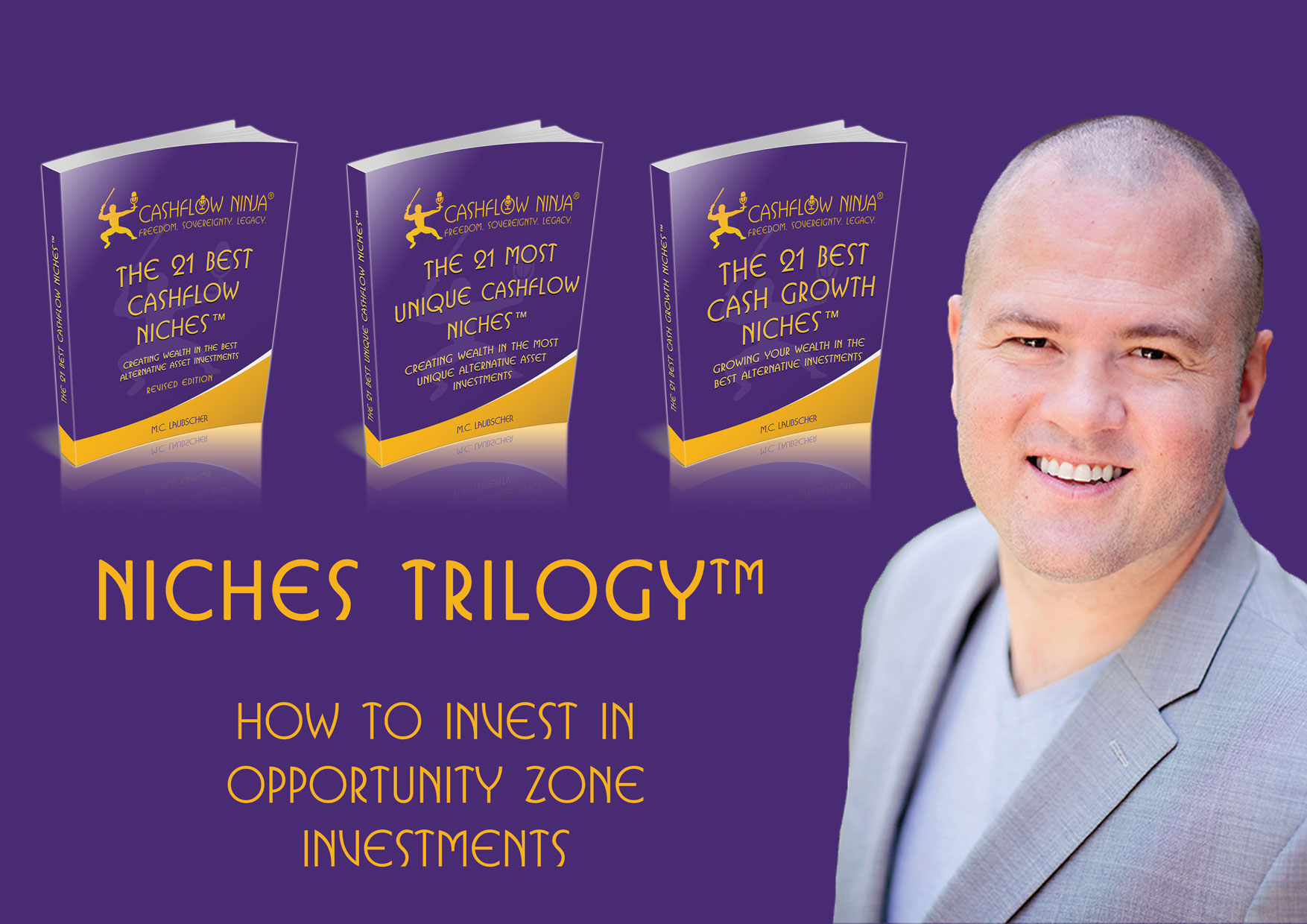
Opportunity Zone Investments are a federal initiative established by the Tax Cuts and Jobs Act of 2017 to spur economic development and job creation in distressed communities across the United States. These investments involve various components, including Opportunity Zones, Qualified Opportunity Funds (QOFs), and specific types of investments.
Opportunity Zones are economically distressed communities designated by the state and certified by the U.S. Treasury Department, identified based on criteria such as income levels and unemployment rates. Opportunity Funds are investment vehicles created to invest in eligible properties or businesses within these Opportunity Zones. Investors can participate by placing their capital gains into these funds.
Why Invest In Opportunity Zone Investments
Investors can defer paying capital gains taxes on the money they invest in a QOF until the end of 2026 or when they sell their Opportunity Fund investment, whichever comes first. Additionally, investors who hold their Opportunity Fund investment for at least five years receive a 10% exclusion of the deferred gain, increasing to 15% if held for at least seven years. Suppose the investment in the Opportunity Fund is held for at least ten years. In that case, any appreciation in the investment is tax-free, meaning the investor pays no capital gains tax on the increase in value within the Opportunity Zone.
Investing in real estate development or renovation within an Opportunity Zone, including residential, commercial, or mixed-use properties, is a common way to take advantage of these incentives. Investments can also be made in businesses operating within Opportunity Zones, provided these businesses generate at least 50% of their gross income from activities within the Zone and meet other qualifying requirements.
Opportunity Zone Investment Ecosystem
The Opportunity Zone investment ecosystem is a multifaceted structure designed to promote economic development in distressed communities across the United States. This ecosystem involves various stakeholders, investment vehicles, and regulatory frameworks, all aimed at driving capital into economically disadvantaged areas to spur job creation and growth.
Opportunity Zones are economically distressed areas identified by state governments and certified by the U.S. Treasury Department. These zones are selected based on criteria such as income levels and unemployment rates to ensure that the most needy communities receive investment.
Qualified Opportunity Funds (QOFs) are investment vehicles specifically designed to invest in eligible properties or businesses within Opportunity Zones. Investors can place their capital gains into these funds, which pool resources to finance development projects and business expansions in the designated areas.
The primary allure of Opportunity Zone investments lies in the significant tax benefits.
These include:
- Tax Deferral: Investors can defer paying capital gains taxes on the money they invest in a QOF until the end of 2026 or when they sell their Opportunity Fund investment, whichever comes first.
- Step-Up in Basis: Investors who hold their investment for at least five years can exclude 10% of the deferred gain from taxes. This exclusion increases to 15% if the investment is held for seven years.
- Tax-Free Appreciation: Investments held for at least ten years can grow tax-free, meaning investors pay no capital gains tax on the appreciation of the investment within the Opportunity Zone.
One of the most common types of Opportunity Zone investments is in real estate development. This includes residential, commercial, and mixed-use projects aimed at revitalizing underserved areas. Investors can also fund businesses operating within Opportunity Zones. These businesses must generate at least 50% of their gross income from activities within the Zone, employ residents of the Zone, and meet other requirements to qualify for the tax benefits.
Federal and state governments play crucial roles in designating Opportunity Zones and setting the regulatory framework for QOFs. Agencies like the U.S. Department of the Treasury and the Internal Revenue Service (IRS) provide oversight and ensure compliance with the program’s rules.
A diverse group of investors participates in the Opportunity Zone ecosystem, including individual investors, institutional investors, real estate developers, and private equity firms. These investors seek to leverage the tax benefits while contributing to community development.
Local community organizations and development agencies often collaborate with investors and developers to ensure that the projects meet the needs of the residents and contribute to sustainable community growth.
How To Grow Capital
Investors make money investing in Opportunity Zone (OZ) investments primarily through a combination of tax incentives, capital appreciation, and income generation from the underlying assets.
Investors can defer paying capital gains taxes on the money they invest in Qualified Opportunity Funds (QOFs) until the end of 2026 or when they sell their Opportunity Fund investment, whichever comes first. This allows investors to use the deferred tax money to generate additional returns.
For investments held for at least five years, investors receive a 10% exclusion of the deferred gain from taxes. This exclusion increases to 15% if the investment is held for seven years, effectively reducing the amount of the original capital gain that will be taxed.
If the investment in the Opportunity Fund is held for at least ten years, any appreciation in the investment is tax-free. This means that the investor does not pay any capital gains tax on the increase in value of the investment within the Opportunity Zone.
One of the most common types of Opportunity Zone investments is in real estate development. This includes residential, commercial, and mixed-use projects aimed at revitalizing underserved areas. As these projects develop and the areas improve, the value of the real estate can increase significantly, providing substantial capital gains.
Investors can also fund businesses operating within Opportunity Zones. Successful businesses can grow and increase in value, providing capital appreciation to investors. Businesses in Opportunity Zones might benefit from lower property costs and incentives, which can enhance their profitability and growth potential.
For real estate investments, rental income from residential or commercial properties can provide a steady stream of income. As property values increase and the area becomes more attractive, rental rates can rise, further increasing income.
For investments in businesses, the revenue generated by these businesses can provide returns to investors. Successful businesses in Opportunity Zones can generate significant income, which can be distributed to investors.
To illustrate, consider an investor with a $100,000 capital gain who invests this amount into a QOF:
- Tax Deferral: The investor defers capital gains taxes on the $100,000 until 2026.
- Step-Up in Basis: If the investment is held for seven years, 15% of the gain ($15,000) is excluded from taxation.
- Tax-Free Appreciation: If the investment grows to $200,000 over ten years, the $100,000 gain in the OZ investment is tax-free.
By leveraging these mechanisms, investors can maximize their returns while contributing to the economic development of distressed communities. This approach allows for both financial gain and positive social impact.
How To Lose Money
Investors can lose money investing in Opportunity Zone (OZ) investments through various mechanisms related to market, economic, and compliance risks. Here are the key ways investors might incur losses:
Economic downturns can adversely affect the value of investments within Opportunity Zones. Real estate prices and business values can decline during economic recessions, leading to capital losses for investors.
Overcrowding in specific Opportunity Zones can lead to oversupply, reducing property values and rental incomes. If too many investors target the same areas, the market can become saturated, leading to diminished returns.
Real estate projects in Opportunity Zones can face delays due to regulatory hurdles, construction issues, or financing problems. Delays can increase costs and reduce the expected returns on investment.
Businesses within Opportunity Zones might fail to achieve expected performance due to management issues, lack of demand, or operational inefficiencies. Poor business performance can result in lower returns or losses.
Opportunity Zone investments must comply with strict regulations, such as substantial improvement tests and usage standards. Failure to comply with these regulations can result in the loss of tax benefits and potential penalties.
Changes in tax policies or regulations could affect the benefits associated with Opportunity Zone investments. If tax laws change, the anticipated tax incentives might be reduced or eliminated, impacting the overall returns.
Opportunity Zone investments, particularly in real estate and private businesses, can be illiquid. Investors might find it challenging to sell their investments quickly without incurring significant losses, especially in a downturn.
The success of Opportunity Zone investments often depends on the local economic conditions. Areas that fail to attract businesses or residents may not see the anticipated economic revitalization, leading to lower returns.
Local political instability or community opposition to development projects can disrupt investment plans and reduce the effectiveness of the investments.
Consider an investor who places $100,000 into a QOF targeting a real estate development in an economically distressed area. If the project faces delays, construction costs overrun, or the local economy fails to improve as expected, the value of the investment could decrease significantly. Additionally, if the investor fails to comply with the substantial improvement requirements, they could lose the tax benefits, further compounding the financial loss.
Positives & Negatives Of Opportunity Zones
Positives:
- Tax Deferral: Investors can defer capital gains taxes on the money invested in Qualified Opportunity Funds (QOFs) until the end of 2026 or when they sell their investment, whichever comes first.
- Step-Up in Basis: If investments are held for at least five years, investors can exclude 10% of the deferred gain from taxes, increasing to 15% if held for seven years.
- Tax-Free Appreciation: Investments held for at least ten years can grow tax-free, meaning no capital gains taxes on the appreciation within the OZ.
- Community Development: Investments help revitalize economically distressed areas by funding real estate development and local businesses, potentially leading to job creation and improved local infrastructure.
- Real Estate and Business Investments: OZs offer various investment opportunities, from residential and commercial real estate to investments in local businesses. This diversity can help investors diversify their portfolios.
Negatives:
- Economic Downturns: Broader economic downturns can adversely affect the value of investments within OZs, leading to potential capital losses.
- Strict Regulations: QOFs must adhere to stringent regulations, including substantial improvement tests and usage standards. Non-compliance can lead to the loss of tax benefits and potential penalties.
- Illiquidity: Investments in OZs, particularly in real estate and private businesses, can be illiquid. Investors might find selling their investments quickly without incurring significant losses challenging.
- Dependence on Local Economy: The success of OZ investments often depends on the economic revitalization of the targeted areas. If local economic conditions do not improve as expected, the returns on investment can be lower than anticipated.
- Market Saturation: Too many investments targeting the same Opportunity Zone can lead to oversupply, reducing property values and rental incomes, and potentially diminishing returns.
- Political Instability and Opposition: Local political instability or community opposition to development projects can disrupt investment plans and reduce their effectiveness.
Investment Opportunity Filter™
The Investment Opportunity Filter™ evaluates an investment opportunity based on cashflow, tax benefits, appreciation, and the leverage it provides.
Opportunity Zone Investments score a 4/4 with The Investment Opportunity Filter™.
Opportunity Zone Investments provides great cashflow, has great tax benefits, and can increase in value with management and operations. It also allows you to leverage the skill sets, capabilities, networks, and capital of others.
Subscribe To Our Weekly Newsletter:
The Wealth Dojo: https://subscribe.wealthdojo.ai/
Download all the Niches Trilogy Books:
The 21 Best Cashflow Niches
Digital: https://www.
Audio: https://podcasters.spotify.
The 21 Most Unique Cashflow Niches
Digital: https://www.
Audio: https://podcasters.spotify.
The 21 Best Cash Growth Niches
Digital: https://www.
Audio: https://podcasters.spotify.
Listen To Cashflow Ninja Podcasts:
Cashflow Ninja
https://podcasters.spotify.
Cashflow Investing Secrets
https://podcasters.spotify.
Cashflow Ninja Banking
https://podcasters.spotify.
Share This
Related

898: Tom Dunkel: The Wealth Builders Playbook
My guest in this episode is Tom Dunkel. Tom Dunkel brings more than 30 years of experience in real estate, finance, and investing to his role as Managing Director of Eagle. Known for his disciplined approach and unwavering alignment with investors, Tom personally invests in every deal he presents, ensuring absolute trust and shared outcomes…

897: Eugene Shatsman: How To Grow & Scale Your Business Right Now
My guest in this episode is Eugene Shatsman. Eugene is the Managing Partner of National Strategic Group. Eugene teaches business strategy, consumer behavior, marketing, and what all of us want – how to drive more business into our businesses. His team at National Strategic has over 100 people, and they do a tremendous amount of…

896: Chris MacIntosh: Opportunities Around The Globe Right Now
My guest in this episode is Chris Macintosh. Chris has founded and built several multi-million dollar businesses in the investment arena, including overseeing the deployment of over $30m into Venture Capital opportunities and advising family offices internationally. Before this, Chris built a career at Invesco Asset Management, Lehman Brothers, JPMChase, & Robert Flemings. Interview Links:…
